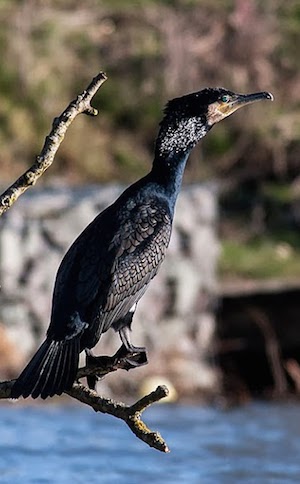Corse

Birding Corsica
Corsica is the fourth largest island in the Mediterranean Sea (after Sicily, Sardinia, and Cyprus). It is located west of Italy, southeast of the French mainland, and north of the island of Sardinia. Corsica is considered one of the 26 régions of France, although strictly speaking Corsica is designated as a ‘territorial collectivity’ (collectivité territoriale) by law. The region consists of the Departments of: Corse du Sud & Haute-Corse. The traditional Province (& Island) of Corsica. As a territorial collectivity, it enjoys greater powers than other French régions, but for the most part its status is quite similar. Corsica is referred to as a ‘région’ in common speech, and is almost always listed among the other régions of France. Although the island is separated from the continental mainland by the Ligurian Sea and is much closer to the Italian than to the French mainland, politically Corsica is part of Metropolitan France. It was once briefly an independent Corsican Republic, until being incorporated into France in 1768.
Corsica is famed as the birthplace of Napoléon Bonaparte. His ancestral home, Casa Buonaparte, is located there still.
Corsica has several rivers, some with tributaries. They originate in inland lakes or mountain passes, flow through gorges featuring rapids and waterfalls, then meander through coastal alluvial deposits before discharging into the sea rather than into one of the many coastal étangs or ‘pools’.
The island is divided into three major ecological zones by altitude.Below 2,000 feet (610 m) is the coastal zone, which features a Mediterranean climate, with hot, dry summers and mild, rainy winters. The natural vegetation is Mediterranean forests, woodlands, and shrubs. The coastal lowlands are part of the Tyrrhenian-Adriatic sclerophyllous and mixed forests ecoregion, in which forests and woodlands of evergreen sclerophyll oaks predominate, chiefly Holm Oak (Quercus ilex) and Cork Oak (Quercus suber). Much of the coastal lowlands have been cleared for agriculture, grazing and logging, which have reduced the forests considerably.From 2,000 to 6,000 feet (610 to 1,800 m) is a temperate montane zone. The mountains are cooler and wetter, and home to the Corsican montane broadleaf and mixed forests ecoregion, which supports diverse forests of oak, pine, and broadleaf deciduous trees, with vegetation more typical of northern Europe. The population lives predominantly below 3,000 feet (910 m), with only shepherds and hikers at 2,000 to 3,000 feet (610 to 910 m).From 6,000 to 9,000 feet (1,800 to 2,700 m) is a high alpine zone. Vegetation is sparse. In spite of the southern location, the highest elevations are snow-capped with small glaciers. This zone is uninhabited.
The island has a natural park (Parc Naturel Régional de Corse), which protects thousands of rare animal and plant species. The park was created in 1972 and includes the Golfe de Porto, the Scandola Nature Reserve (a UNESCO World Heritage Site), and some of the highest mountains on the island. This park is protected and cannot be reached on foot, but people can gain access by boat. Two endangered subspecies of hoofed mammals, the mouflon (Ovis aries musimon) and Corsican red deer (Cervus elaphus corsicanus) inhabit the island; the Corsican red deer is endemic.
-
Tristan Guillosson
France
Facebook Page
-
Number of bird species: 547
Number of endemics: 1
Corsican Nuthatch Sitta whiteheadi
-
iGoTerra Checklist
iGoTerra ChecklistFatbirder Associate iGoTerra offers the most comprehensive and up to date birds lists on the web
-
Birdwatching Guide to France: South of the Loire Including Corsica (Paperback)
| By Jacquie Crozier | Arlequin Publications | 2000 | Paperback | 288 pages, colour photos, illustrations, maps, tables | ISBN: 9781905268023 Buy this book from NHBS.com -
The Birds of Corsica
| (An Annotated Checklist) | by Jean-Claude Thibault & Gilles Bonaccorsi | BOU | 1999 | Hardback | 171 pages, 16pp colour plates, tabs, maps | ISBN: 9780907446217 Buy this book from NHBS.com
-
RP Parc naturel régional de Corse
InformationSatellite iewThe aim is to protect and valorise the rich flora and wildlife of the island.
-
2013 [11 November] - Marcel Holyoak
ReportVERY brief -
2017 [04 April] - Mike Neale
PDF ReportIllustrated list -
2018 [06 June] - Jack Bucknall
PDF ReportWe arrived at Bastia-Poretta airport at 12:45, and upon arriving at our hire car after a hassle-free car pick-up from Sixt, we immediately saw our first Red Kite of the trip, a particularly common sight in almost any habitat on the island. My first lifer of the trip came very shortly after with a group of Italian Sparrows in the car park, anothercommon sight throughout, as were Hooded Crows, Spotless Starlings and Collared Doves. -
2018 [07 July] - Marc Brunel
PDF ReportThis trip was not only a birding trip. The bird list would have been obviously longer if it was dedicated exclusively to birdwatching, however I designed it to observe as many species as possible, targeting the relevant species and subspecies, in particular the only endemic Corsican species, so the only French one, the Corsican Nuthatch. -
2018 [08 August] - Roland van der Vliet
PDF ReportFew bird taxa are really confined to Corsica but these include Corsican Nuthatch. Two other good species that are however shared with Sardinia and/or mainland Italy are Corsican Citril Finch and Moltoni's Subalpine Warbler. These three species were my main targets. Other taxa that are confined to Corsica (and/or Sardinia) are for instance the local subspecies of Sparrowhawk, Goshawk, Common Buzzard, Great Spotted Woodpecker, Jay, Coal Tit, Wren, Eurasian Treecreeper, Mistle Thrush, Greenfinch, Goldfinch and Red Crossbill. I presume that not all these are really diagnosable though. Two further interesting taxa are the local Spotted Flycatcher and Woodchat Shrike: they only breed on the western Mediterranean islands (including the Balearics).

